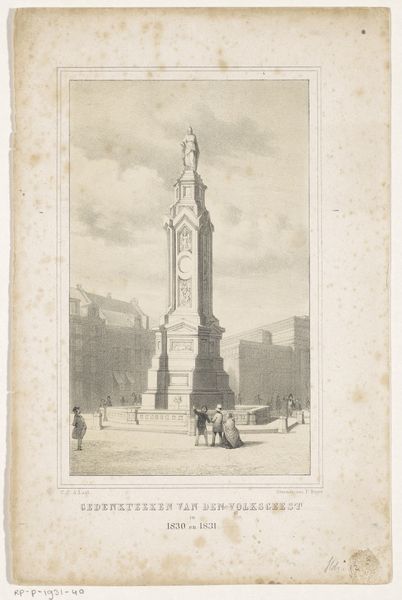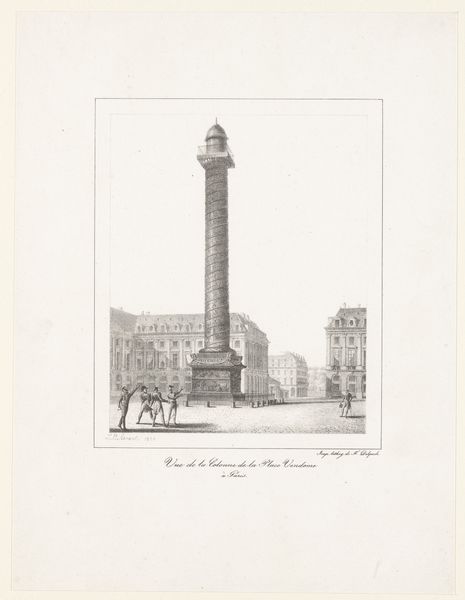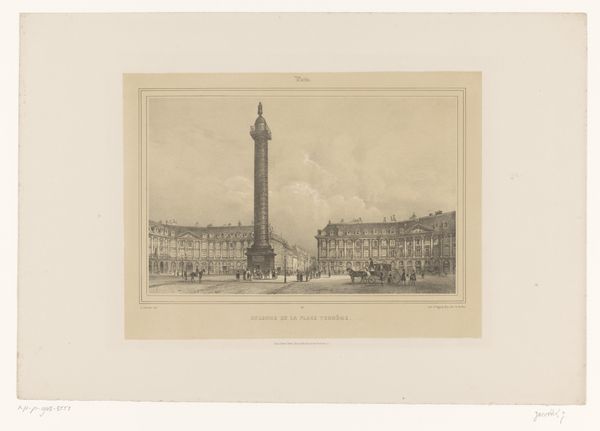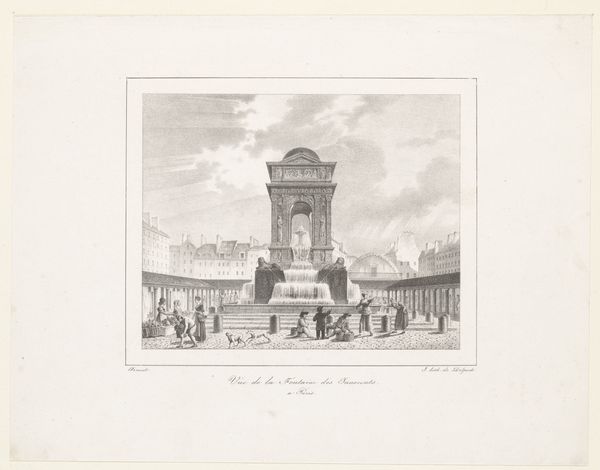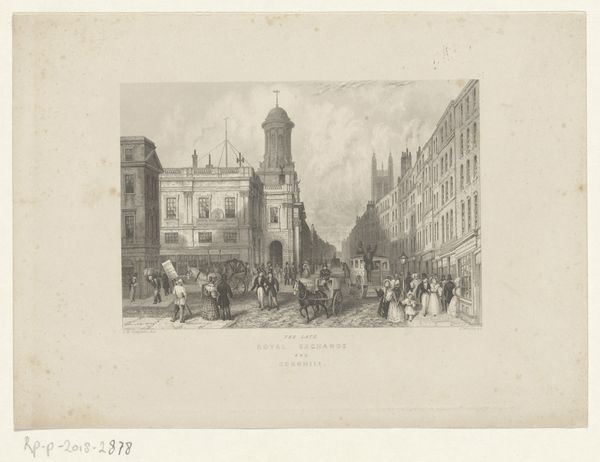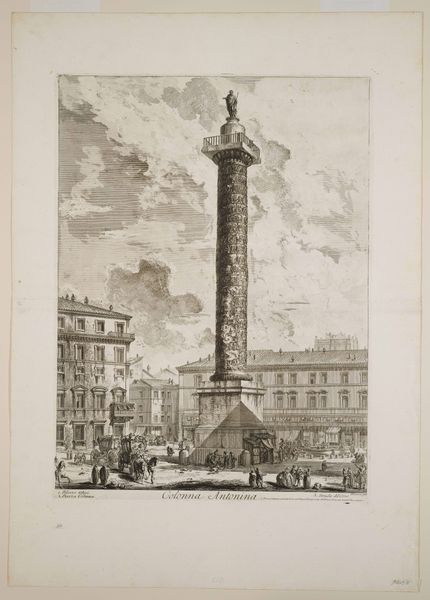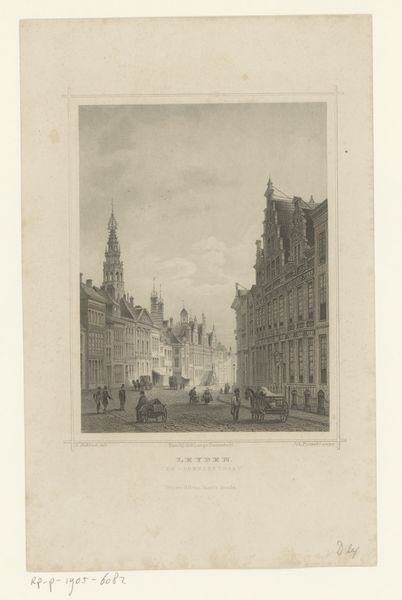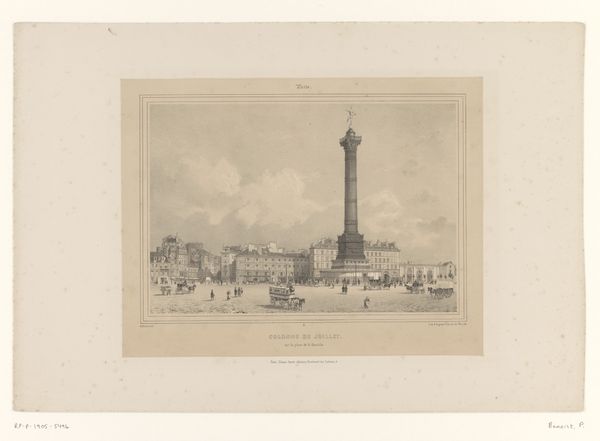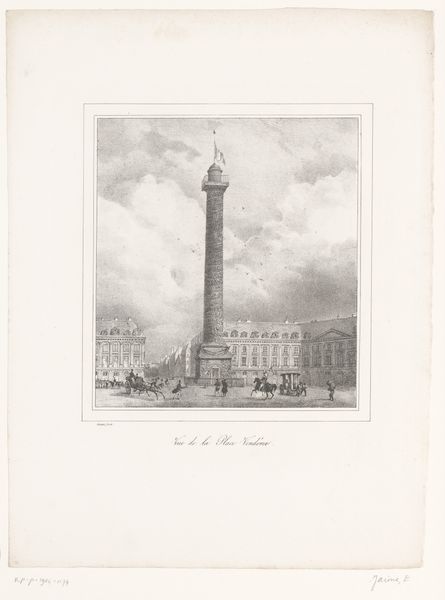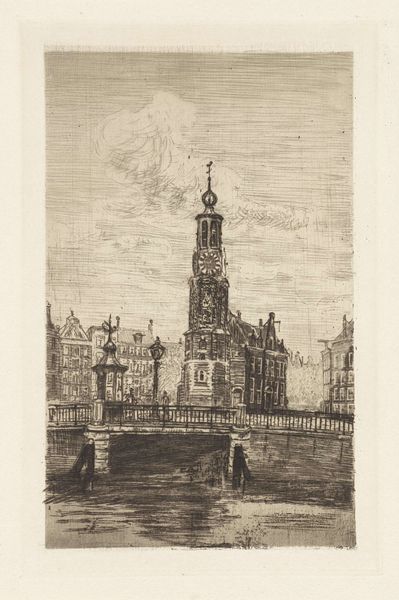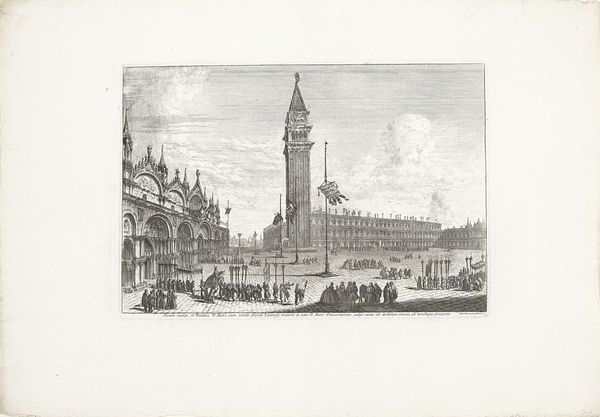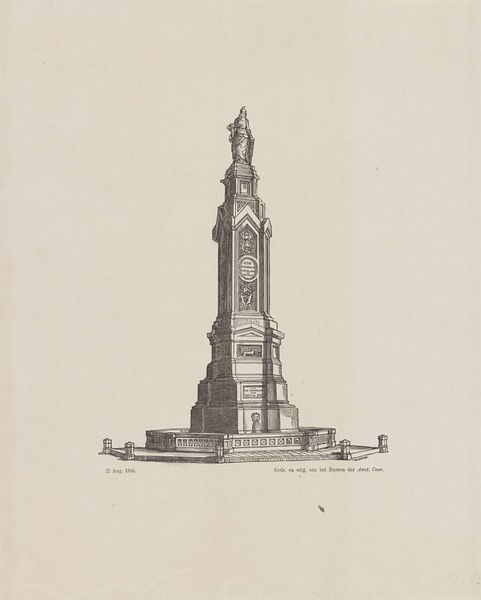
print, etching, engraving, architecture
#
print photography
#
neoclacissism
# print
#
etching
#
historical photography
#
cityscape
#
history-painting
#
engraving
#
architecture
Dimensions: height 635 mm, width 550 mm
Copyright: Rijks Museum: Open Domain
Curator: Welcome. We're looking at Edouard Taurel’s 1856 print, "Gedenkteeken aan den volksgeest van 1830-1831," held here at the Rijksmuseum. Editor: The first thing that strikes me is the print's scale; despite being a cityscape, the monument looms. You immediately get a sense of permanence, and of national identity etched in stone and steel. Curator: It's a fascinating piece of national commemoration. Taurel depicts the monument erected to honor the Belgian volunteers who fought in the 1830-1831 war of independence, during the Belgian Revolution. Editor: So, a symbolic structure representing freedom achieved, solidified through the painstaking work of printmaking: the multiple stages from etching, engraving, down to the final print. The craftsmanship mirrors the monumentality of the memorial. It’s a very material declaration of power and independence. Curator: Precisely. Consider how public monuments like this were powerful tools of nation-building. This print makes the memorial even more accessible. How was it consumed? Did it circulate in homes, reinforcing collective identity and patriotic sentiment? Editor: One imagines, yes. It's like distributing miniature, reproducible versions of state power and ideologies to the masses. Were these printed versions regarded differently than if, for instance, a painter had immortalized the monument in oils? I think the labor inherent in the print elevates the content into an artifact of immense cultural significance. Curator: I agree. The very act of reproducing this monument emphasizes its social and political importance and underlines the values that Belgium was striving to embody as a new nation. The clean, almost Neoclassical lines lend themselves well to print, too. It’s designed for dissemination. Editor: Ultimately, Taurel's print reminds us that our experience of art is always deeply entangled with material and social conditions. We see a cityscape and monument; Taurel crafted a reminder of how art intersects with nation-building, then and now. Curator: Absolutely. It offers insight into how public memory gets constructed, solidified and disseminated via artwork. Thank you for joining me on this brief exploration.
Comments
No comments
Be the first to comment and join the conversation on the ultimate creative platform.
